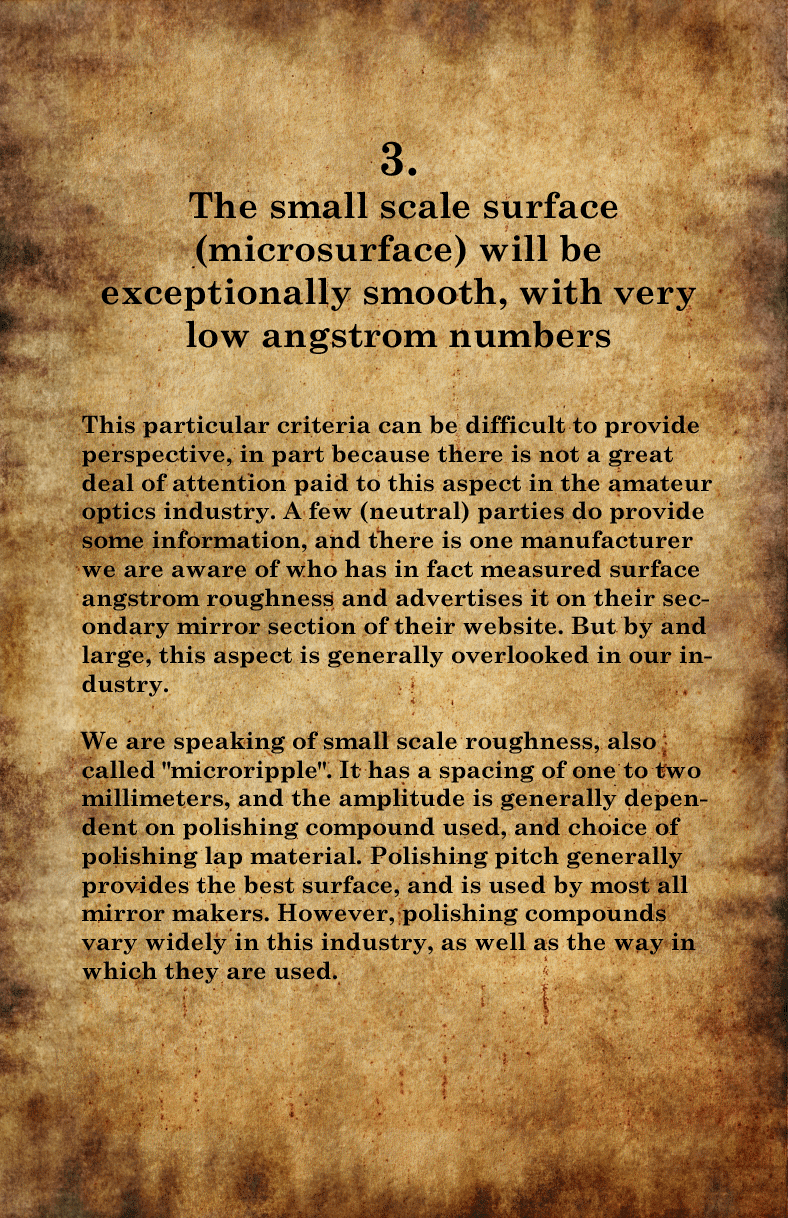 |
||
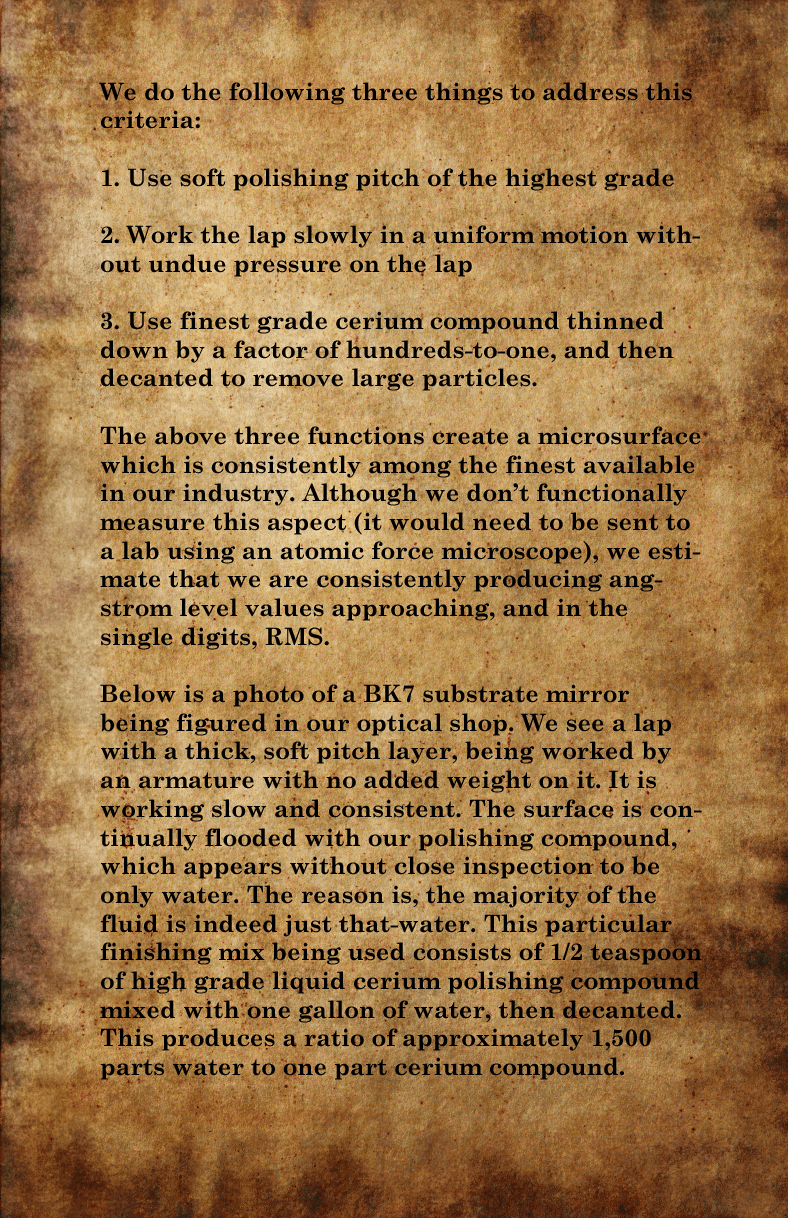 |
||
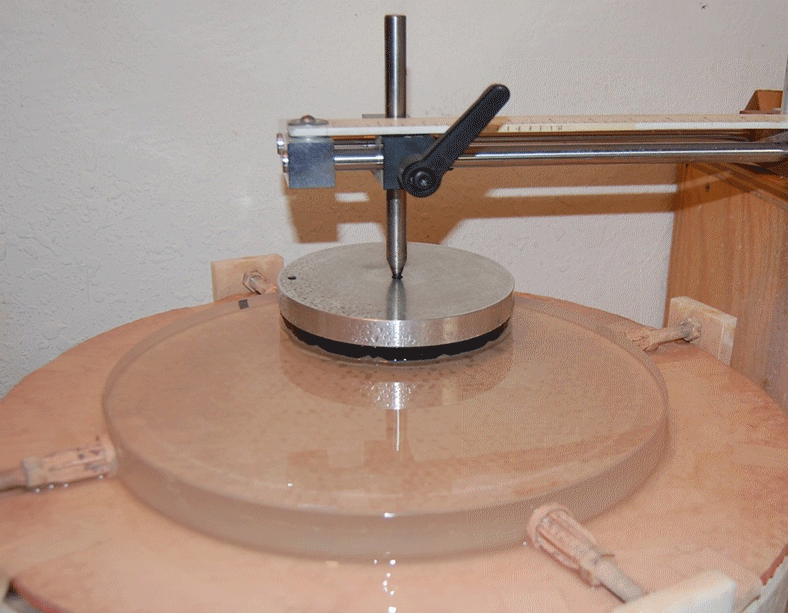 |
||
So what is the result? Under a typical knifedge test microripple is close to, or totally invisible, so it is certainly a small scale situation. A test of higher contrast capability is required to see this level of surface condition (see lyot test below). However the smoothest of surfaces from a mircroripple standpoint are noticed as different to the trained eye that is used to observing bench tests. The "look" we are speaking of is a surface which more resembles and we have always called “cream” as opposed to for example, "fine sandpaper".
Several years ago one of our mirrors was tested in Germany by a customer of ours, who (unbeknownst to us) sent it to Wolfgang Rohr's lab where many optics are evaluated. The results are posted here: http://astro-foren.de/index.php/Thread/9233-Carl-Zambuto-Newton/ The article is titled, “Carl Zambuto Spiegel = allererste Sahne”. We find it interesting that allererste Sahne translates literally to “all first cream”. Below are photos and comments by Wolfgang Rohr from this test suite. We have chosen for this particular subject the images and comments regarding surface smoothness. Comments are translated by Google from the original German text:
“The Ronchi grating test is also to highlight a particularly smooth surfaces: namely if the white thick undisturbed and straight lines, and when in the dark area between the diffraction line is clearly visible and the black area is also brightened, then you are dealing with very precise and smooth looks. Lattice constant: 13 lp / mm in the double fit intrafocal” (Rohr) (We note the Ronchi grating in the autocollimation configuration equates a sensitivity of 660 lines per inch, so this is a sensitive large scale figure test as well as a good check for surface smoothness.) |
||
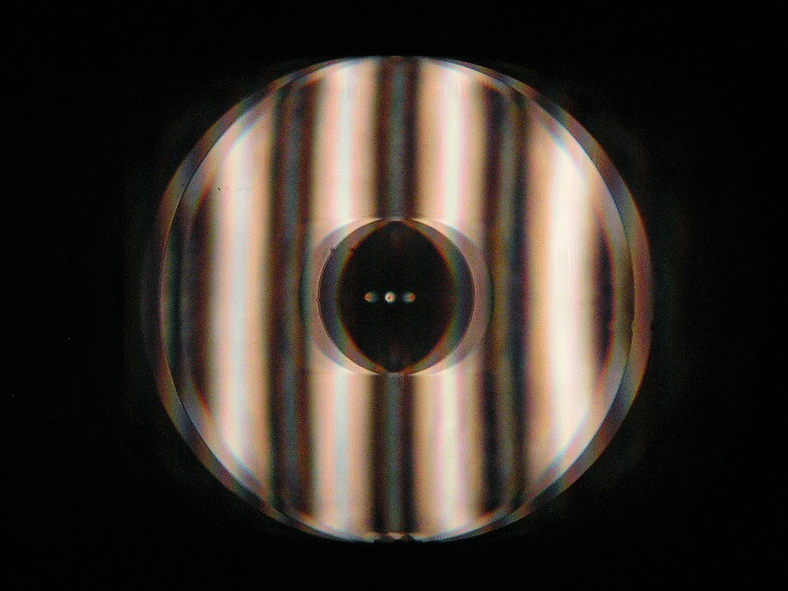 |
||
“An almost uninterrupted and smooth surface in the Foucault test.” (Rohr) (Note: this test is also in autocollimation and so the sensitivity of the knifedge is doubled) |
||
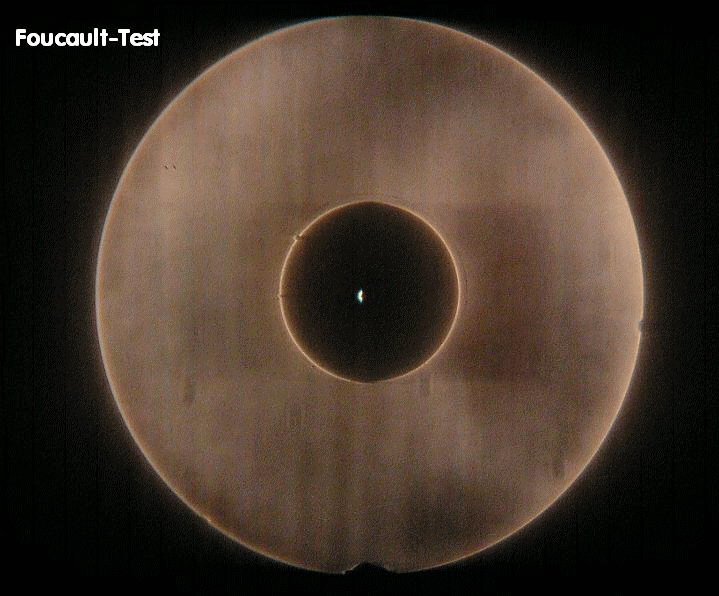 |
||
And below we come to the Lyot test, where only in this situation can we see the 1 to 2 mm surface condition called microripple. (This is the most sensitive bench test there is to look at the angstrom surface condition of an optic, other than using an atomic force microscope.) This condition exists on all optics at this level. We make every effort to keep it to a minimum, as in the mirror imaged below. Following are the tester’s comments and the image:
“Only in the Lyot roughness test can be seen barely perceptible fine zones that Foucault still does not show. “ (Rohr) |
||
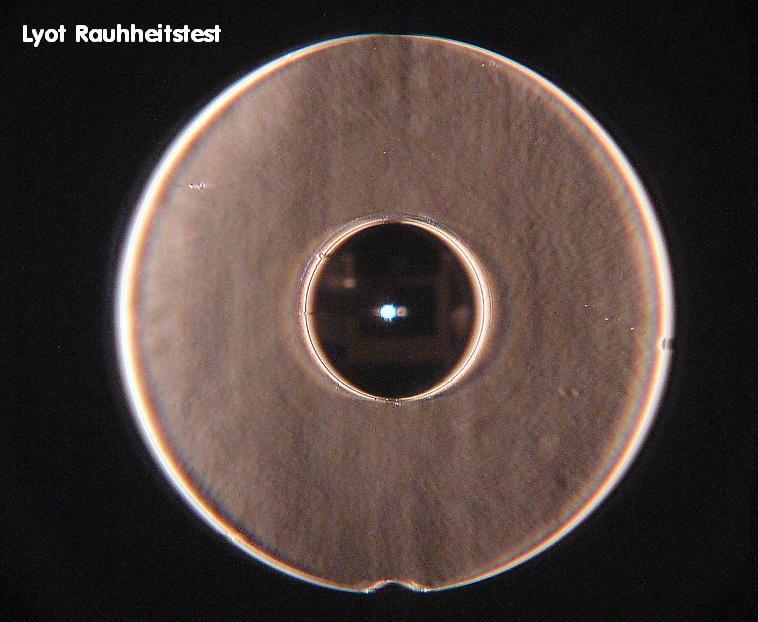 |
||
Bottom line, the reason we address this criterion is stated succintly by Dick Suiter in his book Star Testing Astronomical Telescopes, first edition, page 237: “...the diffraction pattern of scattered light from microripple is a shattered dim glow, quite similar to the aura that occurs with a turned down edge.”
So in order to keep contrast as high as possible, we pay careful attention to microripple. But there is a double benefit here, because when we address microripple in this manner, we also address our next criterion, and that is, medium scale roughness, also known as primary ripple. |
||
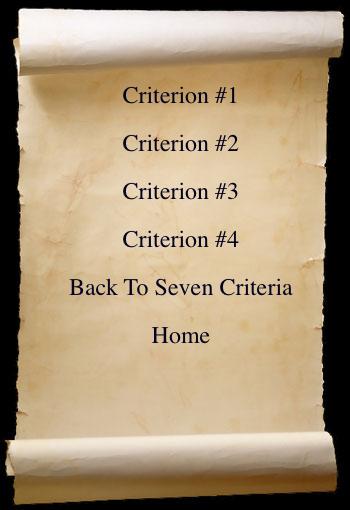 |
||